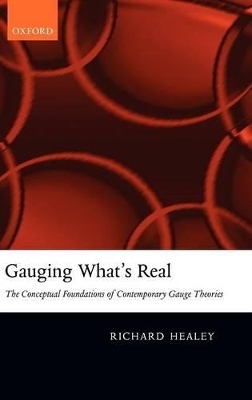
Gauging What's Real
The Conceptual Foundations of Contemporary Gauge Theories
Seiten
2007
Oxford University Press (Verlag)
978-0-19-928796-3 (ISBN)
Oxford University Press (Verlag)
978-0-19-928796-3 (ISBN)
Richard Healey presents a ground-breaking study of an area of physics not previously explored by philosophy: gauge theory. Gauge theories have provided our most successful representations of the fundamental forces of nature. But how do such representations work? Healey defends an original answer to this question.
Gauge theories have provided our most successful representations of the fundamental forces of nature. How, though, do such representations work? Interpretations of gauge theory aim to answer this question. Through understanding how a gauge theory's representations work, we are able to say what kind of world our gauge theories reveal to us.
A gauge theory's representations are mathematical structures. These may be transformed among themselves while certain features remain the same. Do the representations related by such a gauge transformation merely offer alternative ways of representing the very same situation? If so, then gauge symmetry is a purely formal property since it reflects no corresponding symmetry in nature.
Gauging What's Real describes the representations provided by gauge theories in both classical and quantum physics. Richard Healey defends the thesis that gauge transformations are purely formal symmetries of almost all the classes of representations provided by each of our theories of fundamental forces. He argues that evidence for classical gauge theories of forces (other than gravity) gives us reason to believe that loops rather than points are the locations of fundamental properties. In addition to exploring the prospects of extending this conclusion to the quantum gauge theories of the Standard Model of elementary particle physics, Healey assesses the difficulties faced by attempts to base such ontological conclusions on the success of these theories.
Gauge theories have provided our most successful representations of the fundamental forces of nature. How, though, do such representations work? Interpretations of gauge theory aim to answer this question. Through understanding how a gauge theory's representations work, we are able to say what kind of world our gauge theories reveal to us.
A gauge theory's representations are mathematical structures. These may be transformed among themselves while certain features remain the same. Do the representations related by such a gauge transformation merely offer alternative ways of representing the very same situation? If so, then gauge symmetry is a purely formal property since it reflects no corresponding symmetry in nature.
Gauging What's Real describes the representations provided by gauge theories in both classical and quantum physics. Richard Healey defends the thesis that gauge transformations are purely formal symmetries of almost all the classes of representations provided by each of our theories of fundamental forces. He argues that evidence for classical gauge theories of forces (other than gravity) gives us reason to believe that loops rather than points are the locations of fundamental properties. In addition to exploring the prospects of extending this conclusion to the quantum gauge theories of the Standard Model of elementary particle physics, Healey assesses the difficulties faced by attempts to base such ontological conclusions on the success of these theories.
Introduction ; 1. What is a Gauge Theory? ; 2. The Aharonov-Bohm E[currency]ect ; 3. Classical Gauge Theories ; 4. Interpreting Classical Gauge Theories ; 5. Quantized Yang-Mills Gauge Theories ; 6. The Empirical Import of Gauge Symmetry ; 7. Loop Representations ; 8. Interpreting Quantized Yang-Mills Gauge Theories ; 9. Conclusions
| Erscheint lt. Verlag | 27.9.2007 |
|---|---|
| Verlagsort | Oxford |
| Sprache | englisch |
| Maße | 164 x 240 mm |
| Gewicht | 624 g |
| Themenwelt | Geisteswissenschaften ► Philosophie ► Metaphysik / Ontologie |
| Mathematik / Informatik ► Mathematik | |
| Naturwissenschaften ► Physik / Astronomie ► Hochenergiephysik / Teilchenphysik | |
| ISBN-10 | 0-19-928796-1 / 0199287961 |
| ISBN-13 | 978-0-19-928796-3 / 9780199287963 |
| Zustand | Neuware |
| Haben Sie eine Frage zum Produkt? |
Mehr entdecken
aus dem Bereich
aus dem Bereich
Buch | Hardcover (2012)
Westermann Schulbuchverlag
CHF 44,90
Schulbuch Klassen 7/8 (G9)
Buch | Hardcover (2015)
Klett (Verlag)
CHF 29,90
Buch | Softcover (2004)
Cornelsen Verlag
CHF 23,90


